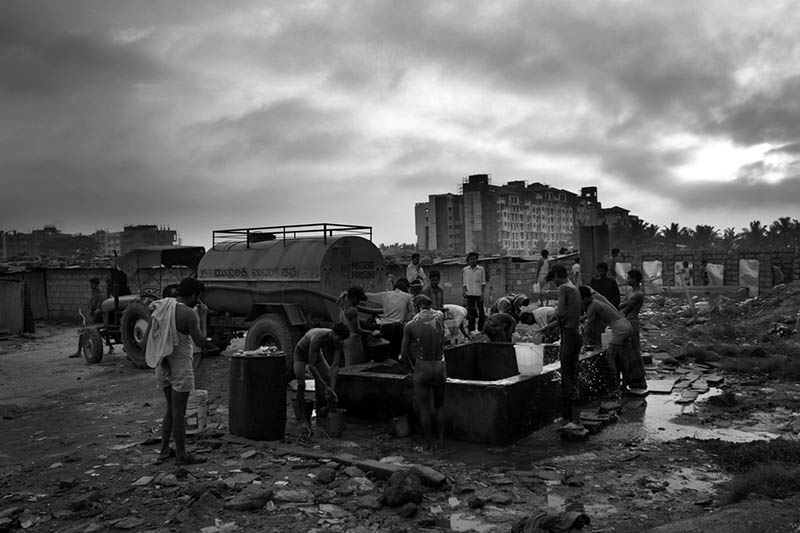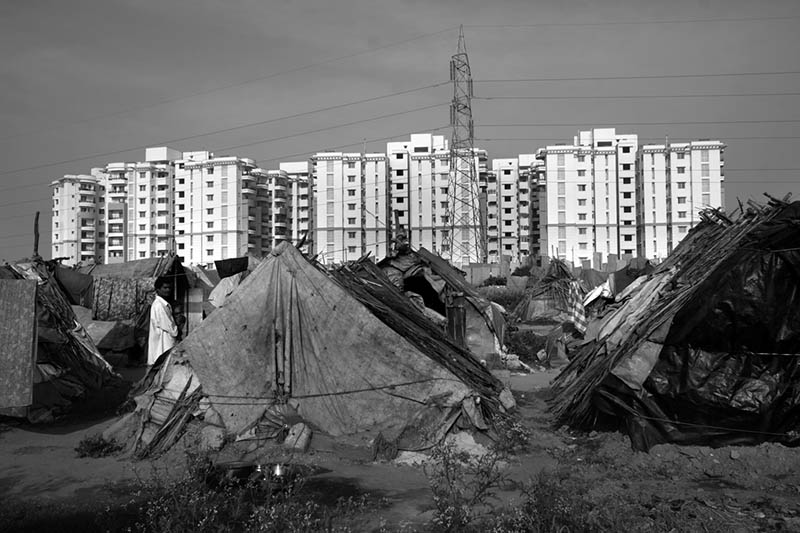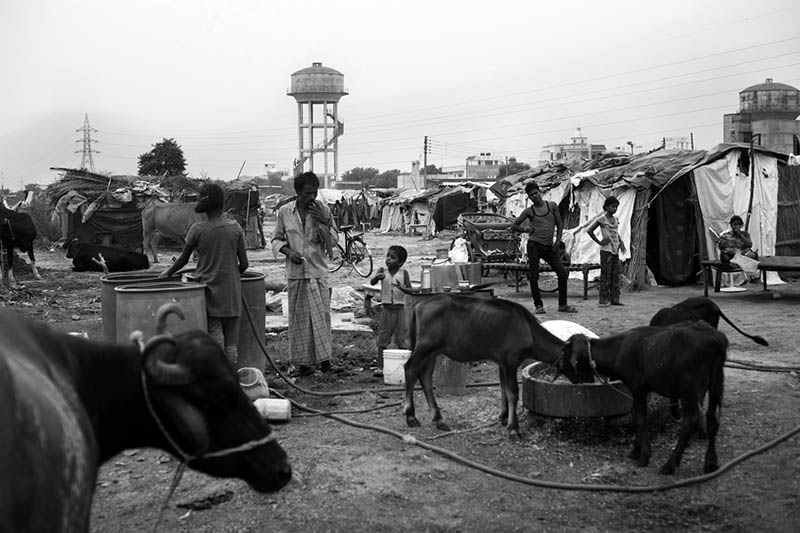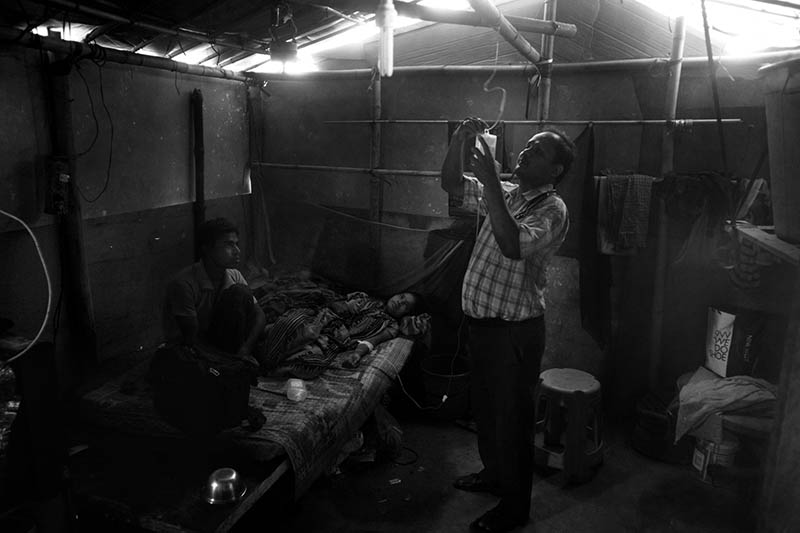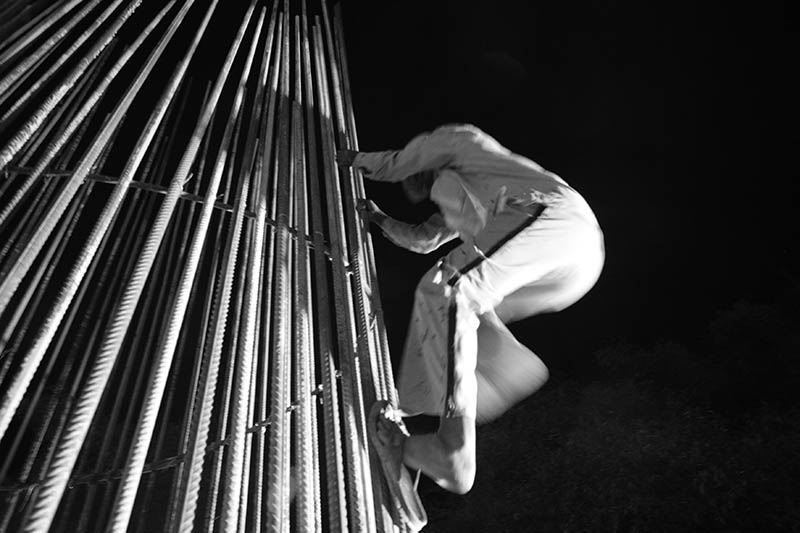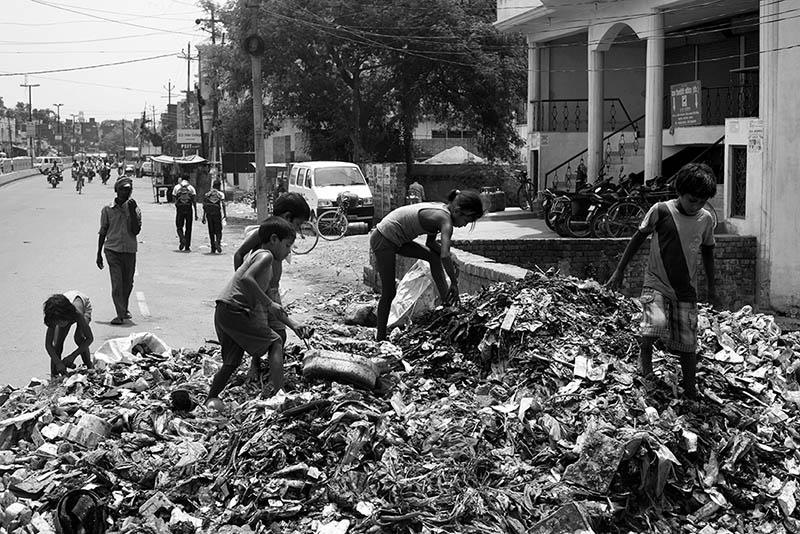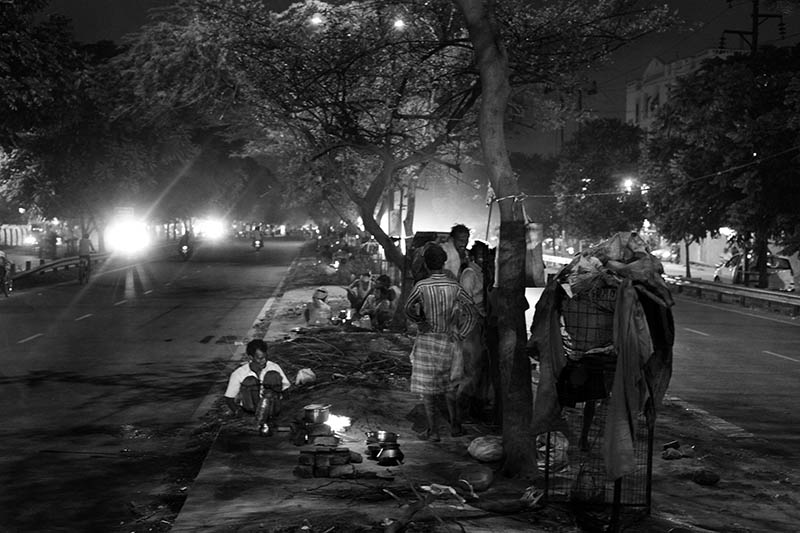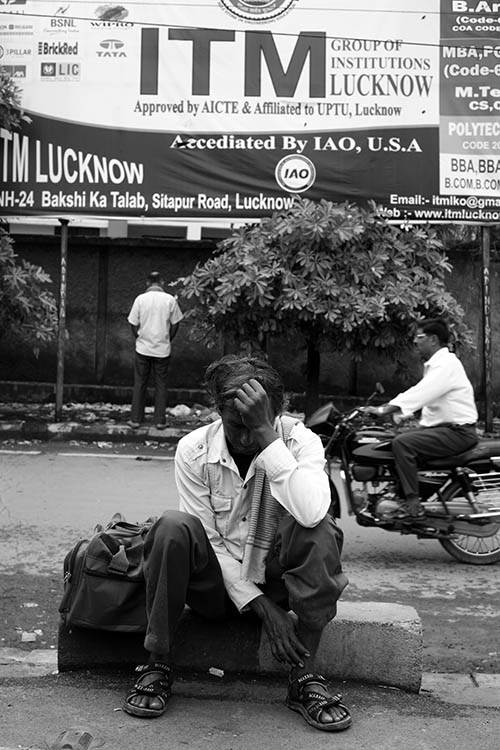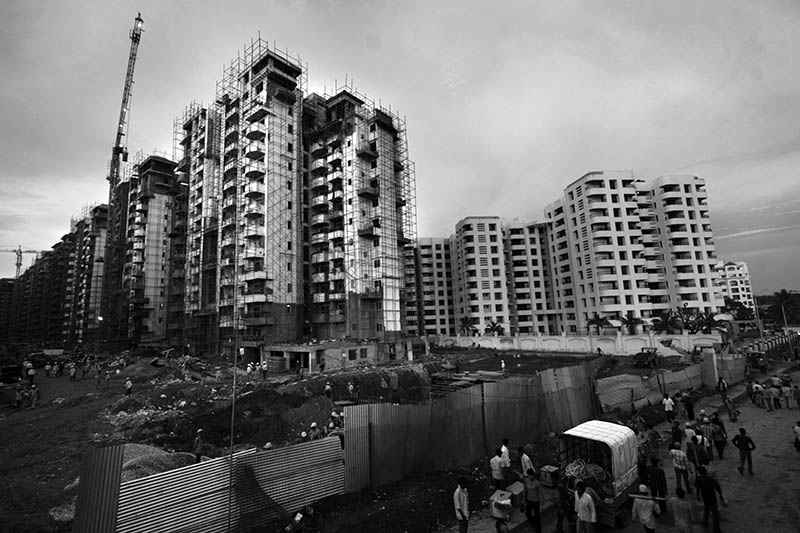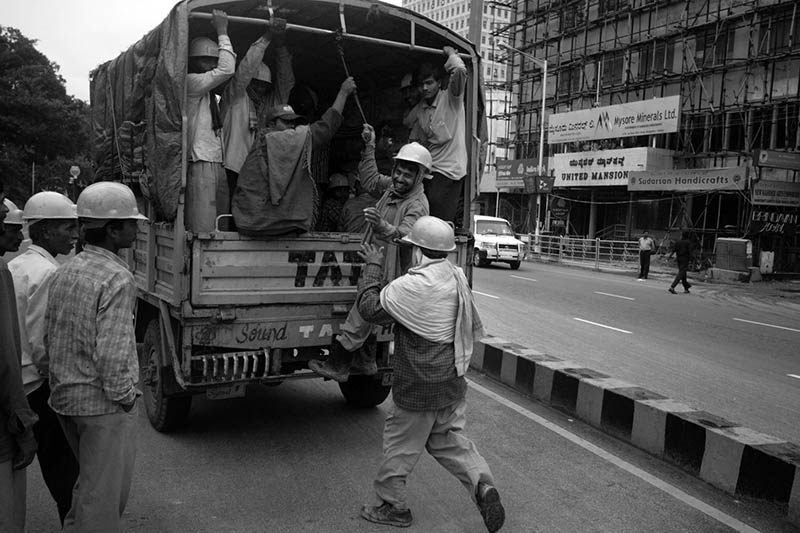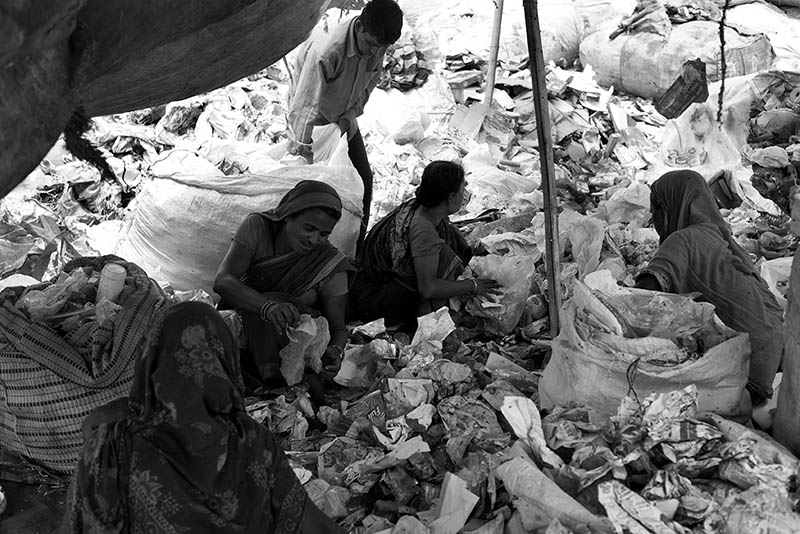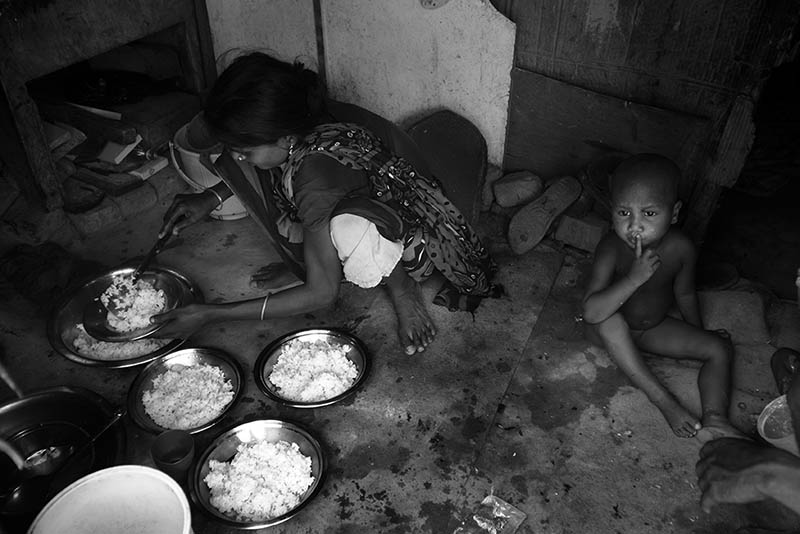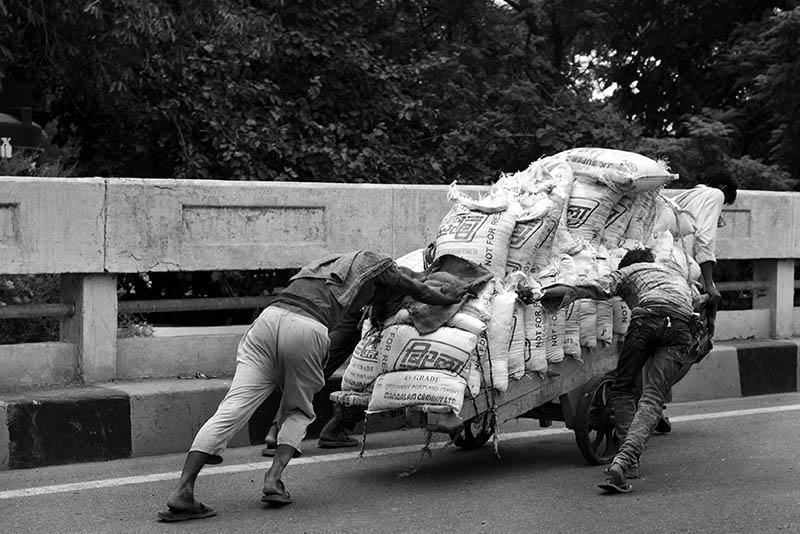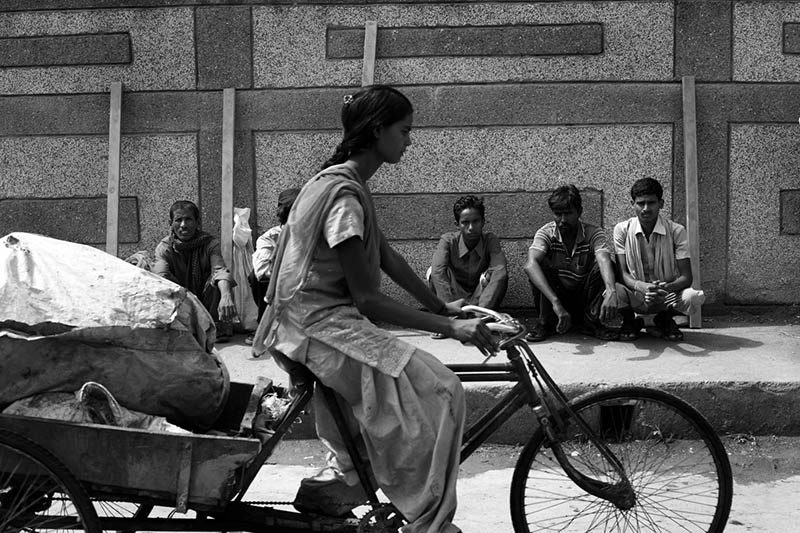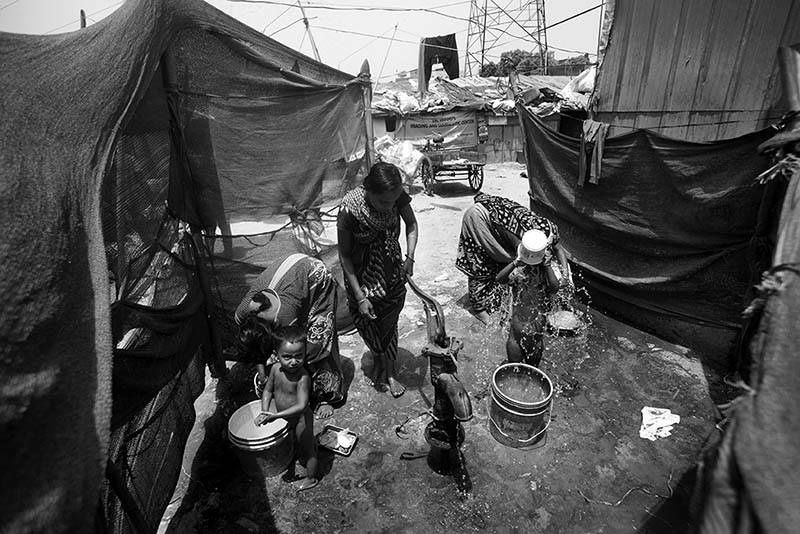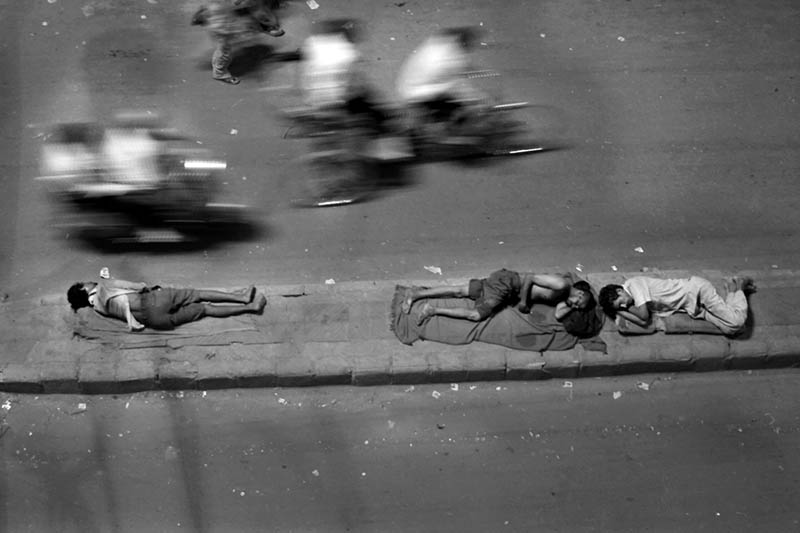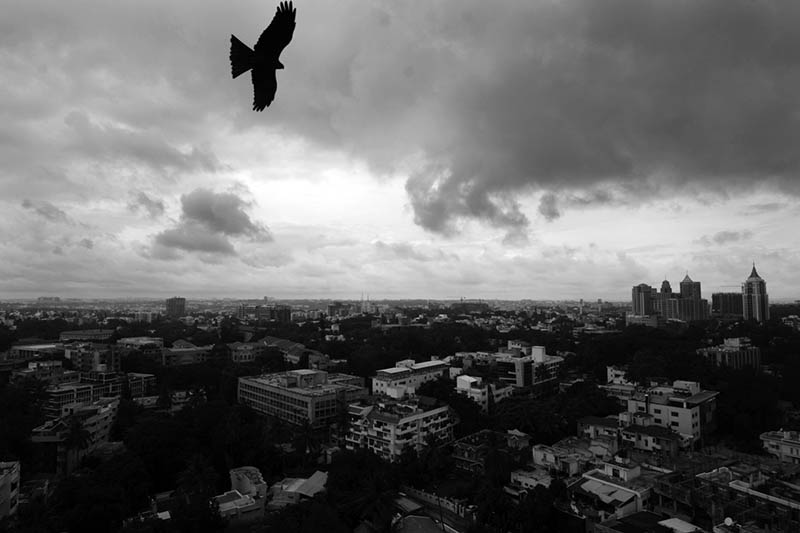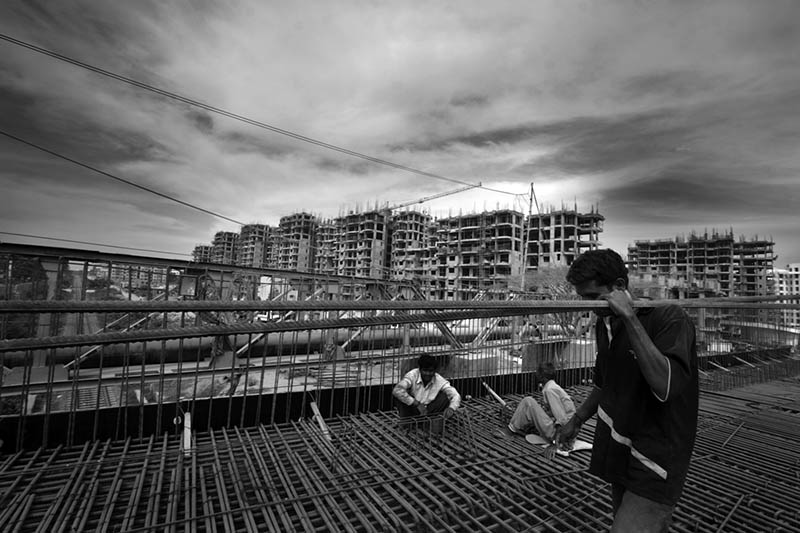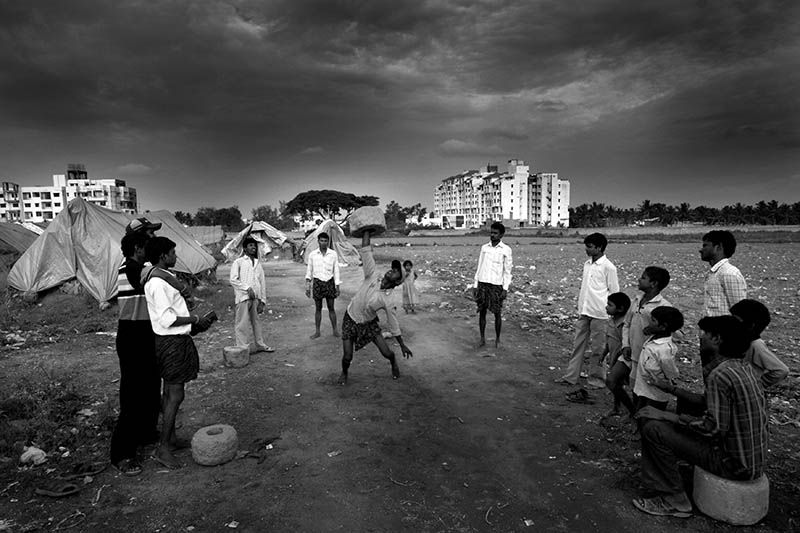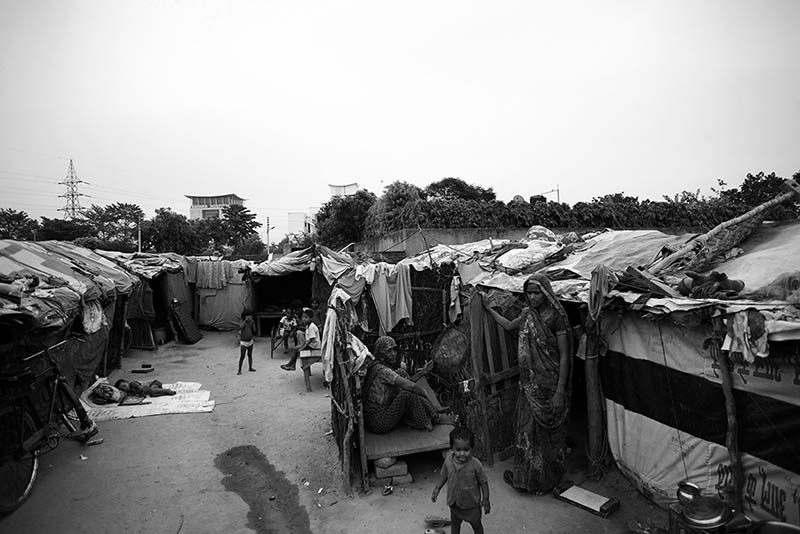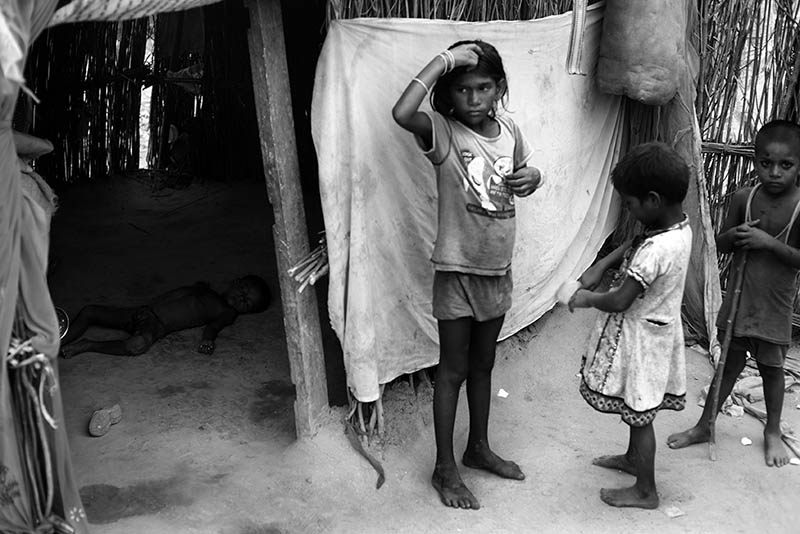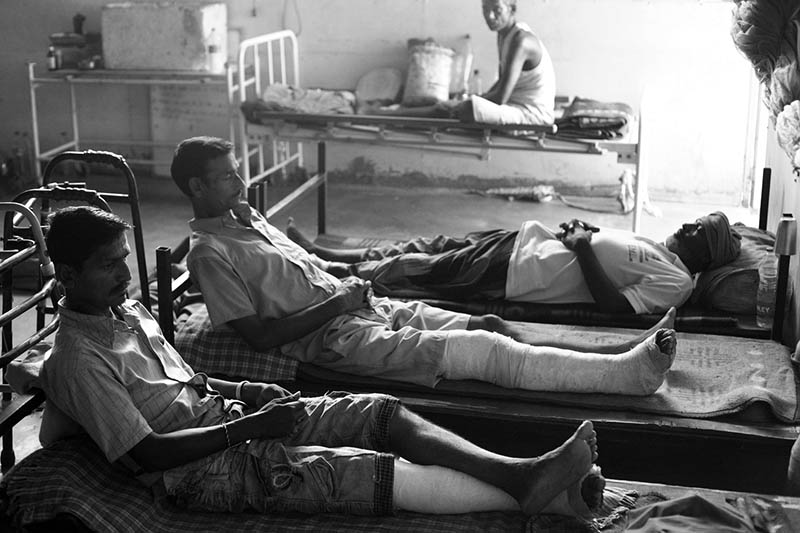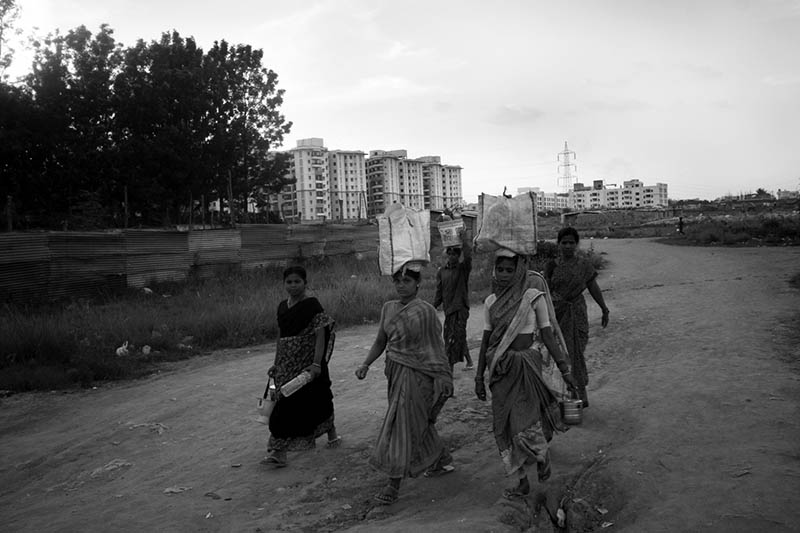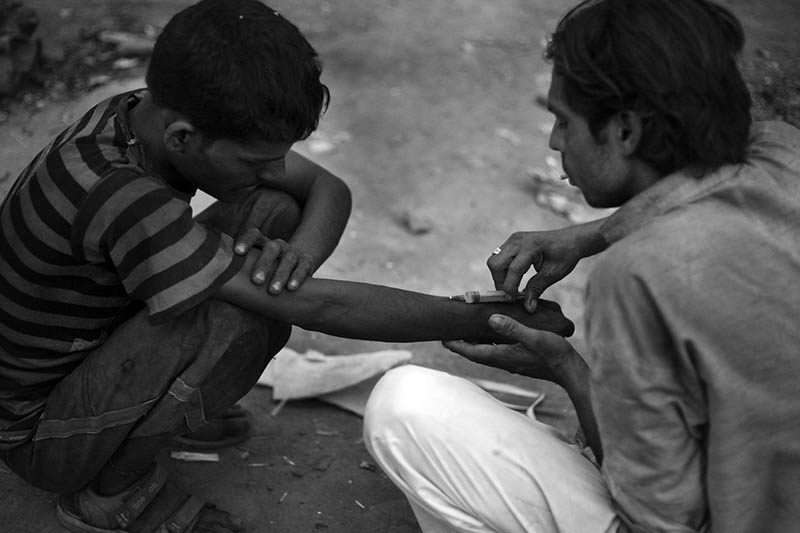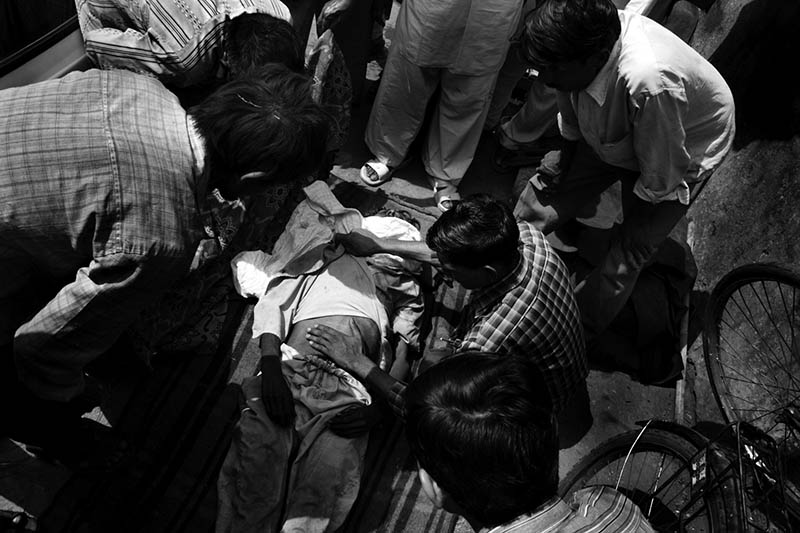Migrant Labour’s of “Shining” India
Construction is the largest sector in India after agriculture. Most of the employment in construction is migrant labour.
The working hours are from sunrise to sunset. The working day of women often stretches from 12 to 14 hours, combining housework and work at the site. On the site, women are paid Rupees.100 – 150 a day while men are paid Rupees.150 – 200. Masons earn up to Rupees.250-350 a day. The workplace is unsafe. The workers have no social security, compensation for injuries, access to drinking water, and health care. India has the world’s highest accident rate among construction workers. A recent study by the International Labor Organization shows that 165 out of every 1,000 workers are injured on the job. There are 20 million domestic workers mostly migrants from rural India. Regular streams of new migrants, leaving behind, scorched fields and emaciated families in the tribal belts of Bihar, Orissa, Chattisgarh, Jharkhand, Assam, and Mizoram for Mumbai, Delhi, and other Metros. They are desperate to join the army of domestic workers.
They are willing to work for much less than those who are already working. They are victims of constant verbal and sexual abuse, working without any grievance redressal mechanism. Worsening their situation are the local Governments’ brutal eviction drives – dislocating and destabilizing the lives of the very people without whom the cities would come to a crippling halt. Further, they have to live in make-shift tents with plastic covers. They are forced to bathe and defecate out in the open. As they are migrant workers, they do not possess Public Distribution System (PDS) Cards and are hence forced to buy food grains and kerosene at higher market prices. The ruling elite, which considers Child Labour as a menace, little realizes that it is a natural consequence of migrations. Social Structures and patterns of development mostly influence migration in India, the development policies by all the governments since Independents.

